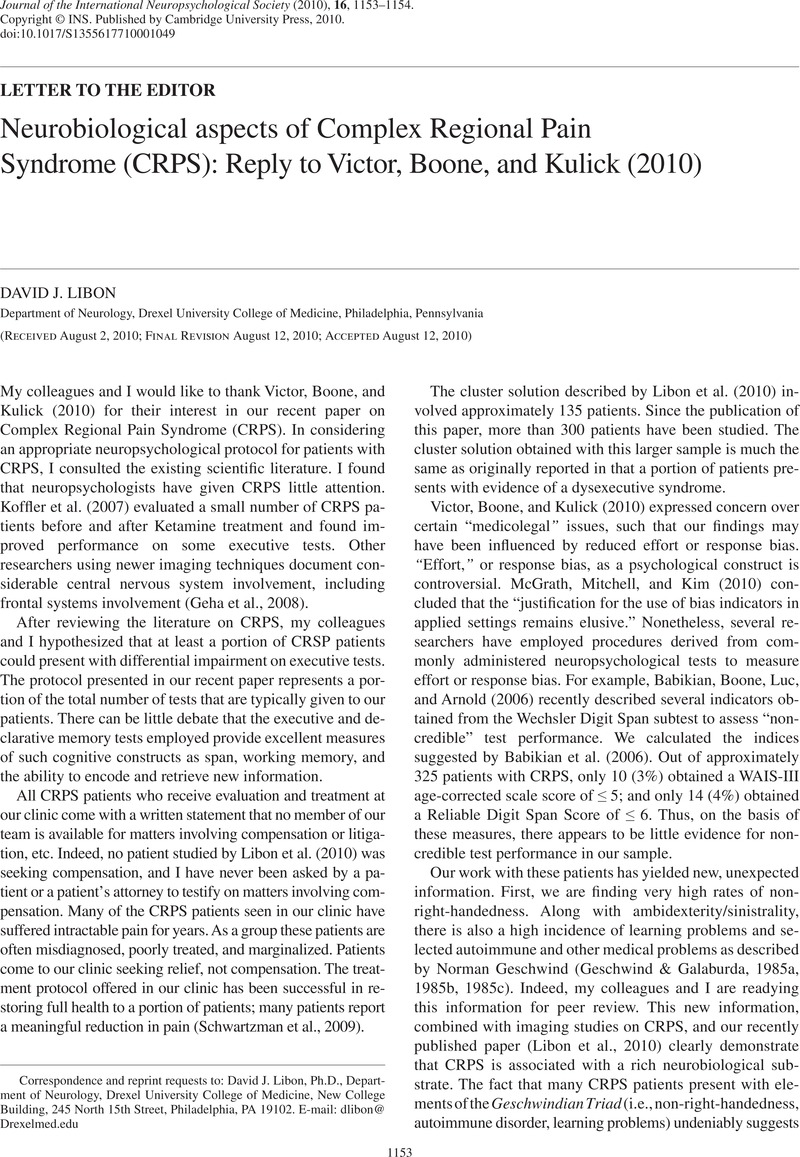Crossref Citations
This article has been cited by the following publications. This list is generated based on data provided by Crossref.
Greiffenstein, Manfred
Gervais, Roger
Baker, W. John
Artiola, Lidia
and
Smith, Harold
2013.
Symptom Validity Testing in Medically Unexplained Pain: A Chronic Regional Pain Syndrome Type 1 Case Series.
The Clinical Neuropsychologist,
Vol. 27,
Issue. 1,
p.
138.



